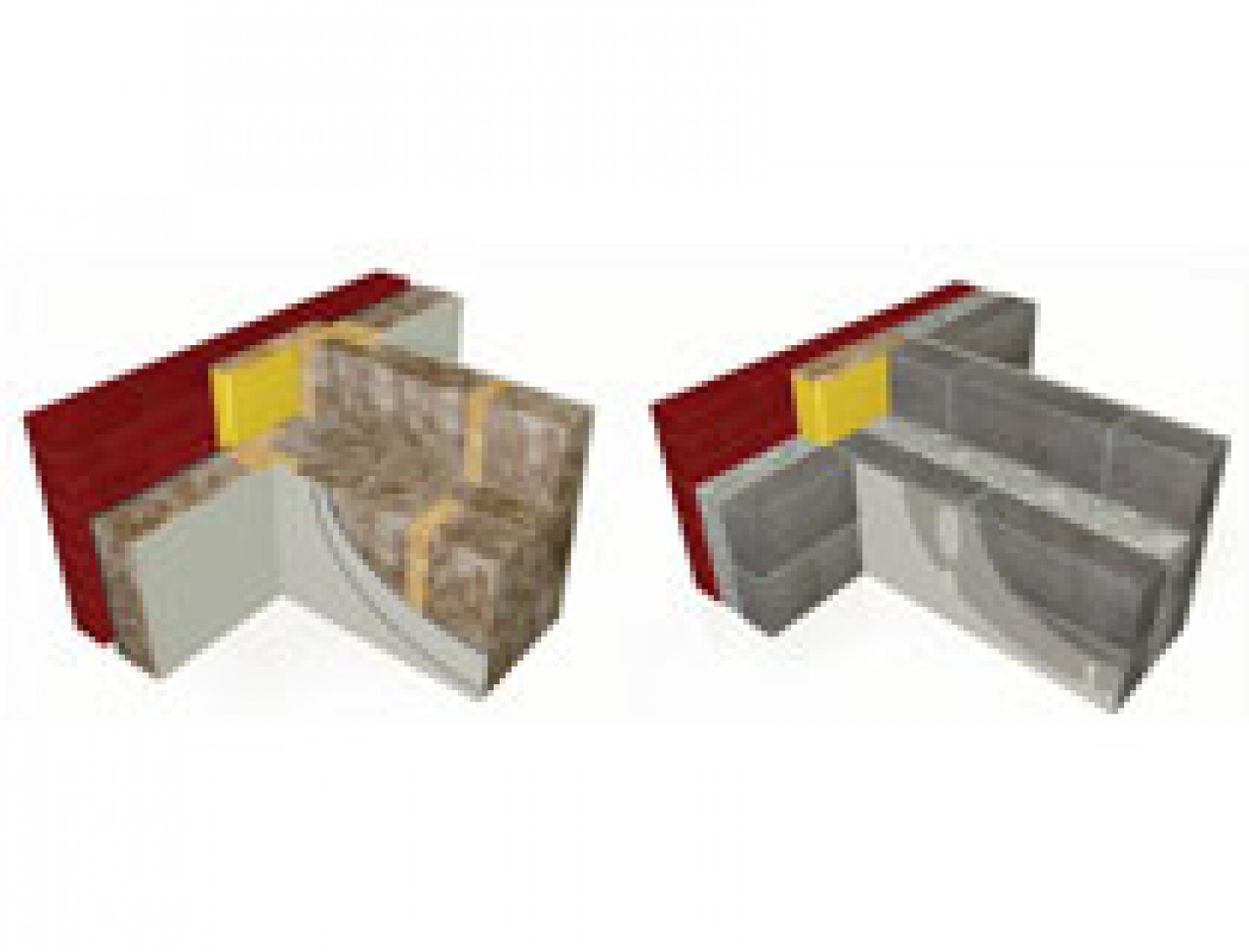The changes to Part L1A of the building regulations, which came into effect on 1st October 2010, have placed an unprecedented focus on the thermal effect of party wall cavities. In order to help specifiers meet the new requirements, Knauf Insulation offers solutions for both masonry and timber frame construction.
The changes to Part L are stringent, demanding a 25 per cent reduction in CO2 emissions below the standard set out in the 2006 document. A significant change is the new requirement for heat loss through the party wall to be included. Previously it had been assumed that there was no heat loss via party walls, but research undertaken by Leeds Metropolitan University has shown that where a cavity exists in a party wall the heat loss can be equivalent to the wall having a U-value of 0.50 W/m2K or higher.
The mechanism causing this involves the air in the cavity being warmed by heat conducted through the leaves of the party wall and then escaping from the cavity to the external environment. This has become known as party wall bypass. The approved document to Part L1A requires that an effective U value of 0.50 W/m2K is attributed to the party walls with a cavity where no specific action is taken, 0.20 W/m2K where effective edge sealing is provided and 0.00 where the cavity is fully filled in addition to effective edge sealing. Unfortunately the building regulation does not explain how to achieve or demonstrate effective edge sealing.
Steve Smith, Knauf Insulation Market Manager, Residential New Build, said: “MIMA the mineral wool trade association has sponsored a program of testing in real buildings to understand the mechanisms and develop solutions to eliminate party wall bypass. These have shown that a solution comprising of full fill mineral wool in effective contact with both faces of the cavity and sleeved flexible mineral wool cavity barriers at the perimeter can achieve a Zero U-value, and thus are meeting the requirements of full fill and effective edge sealing. It is important to note that the effective edge sealing is a function of the combination of the mineral wool filling the cavity (which restricts air movement in the cavity) and the sleeved flexible mineral wool cavity barriers. On their own or even with other full fill materials the cavity barriers may not provide effective edge sealing.
For masonry construction, Knauf Insulation will be able to supply a blown-in solution, offering complete flexibility. Intended for post-construction applications, Supafil Party Wall is a premium quality, non-combustible, glass mineral wool insulation that requires no mixing on site. Only available for installation by approved specialist contractors, it is injected into the walls after they have been built, allowing the cavity to be inspected before being insulated. Proven during in-situ testing to fully fill the cavity and completely prevent heat loss within a party wall, it saves energy and reduces carbon emissions.
For timber frame construction Earthwool Timber Frame Party Wall Slab will be available as a built-in glass mineral wool solution that has been specifically designed to be friction fitted into the cavity between the timber frames. The slabs are non-combustible inorganic glass wool manufactured in accordance with BSI Quality Assurance Standard BS EN ISO 9001: 2000. They are also non-hygroscopic and rot proof – essential considerations for installation in a timber framed building.
The timber frame built-in solution also benefits from Knauf Insulation’s patented ECOSE® Technology, a revolutionary bio-based, formaldehyde-free binder technology. The innovative process produces naturally brown insulation without the need for added dyes and reduces embodied energy, delivering superior environmental sustainability.
“Complying with the new requirements for party wall cavities need not be a difficult task. We understand that one solution is not appropriate for every situation and this is why we are specifically developing products most suitable to the application under consideration.” concludes Steve.
To help specifiers find their way around the changes to the building regulations Knauf Insulation has put together a series of guides which can be downloaded from their website. Covering Part L1A – new dwellings (including the requirements for party walls), Part L1B – existing dwellings and Section 6 of the Scottish legislation.
For more information please visit www.knaufinsulation.co.uk
